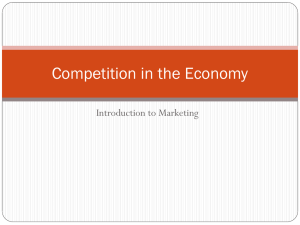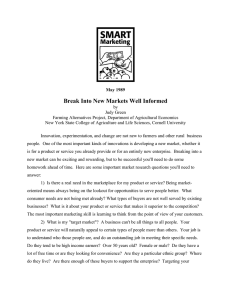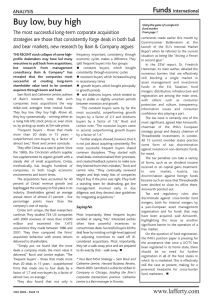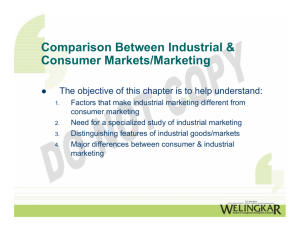The newsletter of In this issue
advertisement
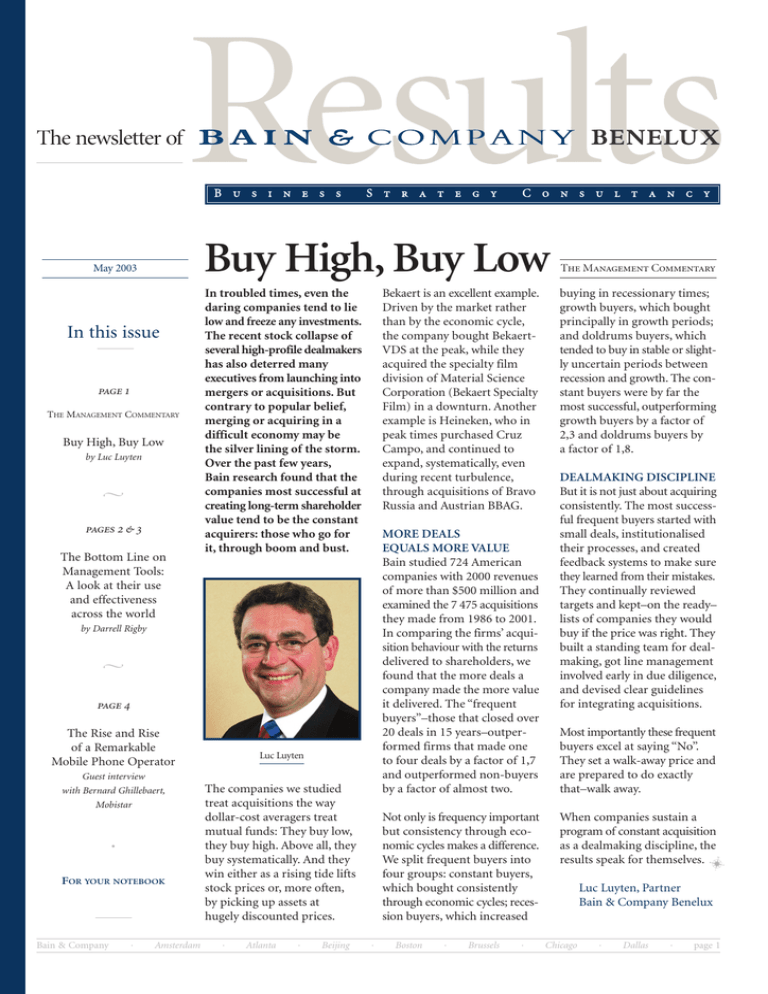
The newsletter of Buy High, Buy Low May 2003 In this issue THE MANAGEMENT COMMENTARY Buy High, Buy Low by Luc Luyten The Bottom Line on Management Tools: A look at their use and effectiveness across the world In troubled times, even the daring companies tend to lie low and freeze any investments. The recent stock collapse of several high-profile dealmakers has also deterred many executives from launching into mergers or acquisitions. But contrary to popular belief, merging or acquiring in a difficult economy may be the silver lining of the storm. Over the past few years, Bain research found that the companies most successful at creating long-term shareholder value tend to be the constant acquirers: those who go for it, through boom and bust. Bekaert is an excellent example. Driven by the market rather than by the economic cycle, the company bought BekaertVDS at the peak, while they acquired the specialty film division of Material Science Corporation (Bekaert Specialty Film) in a downturn. Another example is Heineken, who in peak times purchased Cruz Campo, and continued to expand, systematically, even during recent turbulence, through acquisitions of Bravo Russia and Austrian BBAG. MORE DEALS EQUALS MORE VALUE Bain studied 724 American companies with 2000 revenues of more than $500 million and examined the 7 475 acquisitions they made from 1986 to 2001. In comparing the firms’ acquisition behaviour with the returns delivered to shareholders, we found that the more deals a company made the more value it delivered. The “frequent buyers”–those that closed over 20 deals in 15 years–outperformed firms that made one to four deals by a factor of 1,7 and outperformed non-buyers by a factor of almost two. by Darrell Rigby The Rise and Rise of a Remarkable Mobile Phone Operator Guest interview with Bernard Ghillebaert, Mobistar • FOR YOUR NOTEBOOK Bain & Company · Amsterdam Luc Luyten The companies we studied treat acquisitions the way dollar-cost averagers treat mutual funds: They buy low, they buy high. Above all, they buy systematically. And they win either as a rising tide lifts stock prices or, more often, by picking up assets at hugely discounted prices. · Atlanta · Beijing Not only is frequency important but consistency through economic cycles makes a difference. We split frequent buyers into four groups: constant buyers, which bought consistently through economic cycles; recession buyers, which increased · Boston · Brussels · T M C buying in recessionary times; growth buyers, which bought principally in growth periods; and doldrums buyers, which tended to buy in stable or slightly uncertain periods between recession and growth. The constant buyers were by far the most successful, outperforming growth buyers by a factor of 2,3 and doldrums buyers by a factor of 1,8. DEALMAKING DISCIPLINE But it is not just about acquiring consistently. The most successful frequent buyers started with small deals, institutionalised their processes, and created feedback systems to make sure they learned from their mistakes. They continually reviewed targets and kept–on the ready– lists of companies they would buy if the price was right. They built a standing team for dealmaking, got line management involved early in due diligence, and devised clear guidelines for integrating acquisitions. Most importantly these frequent buyers excel at saying “No”. They set a walk-away price and are prepared to do exactly that–walk away. When companies sustain a program of constant acquisition as a dealmaking discipline, the results speak for themselves. Luc Luyten, Partner Bain & Company Benelux Chicago · Dallas · page 1


